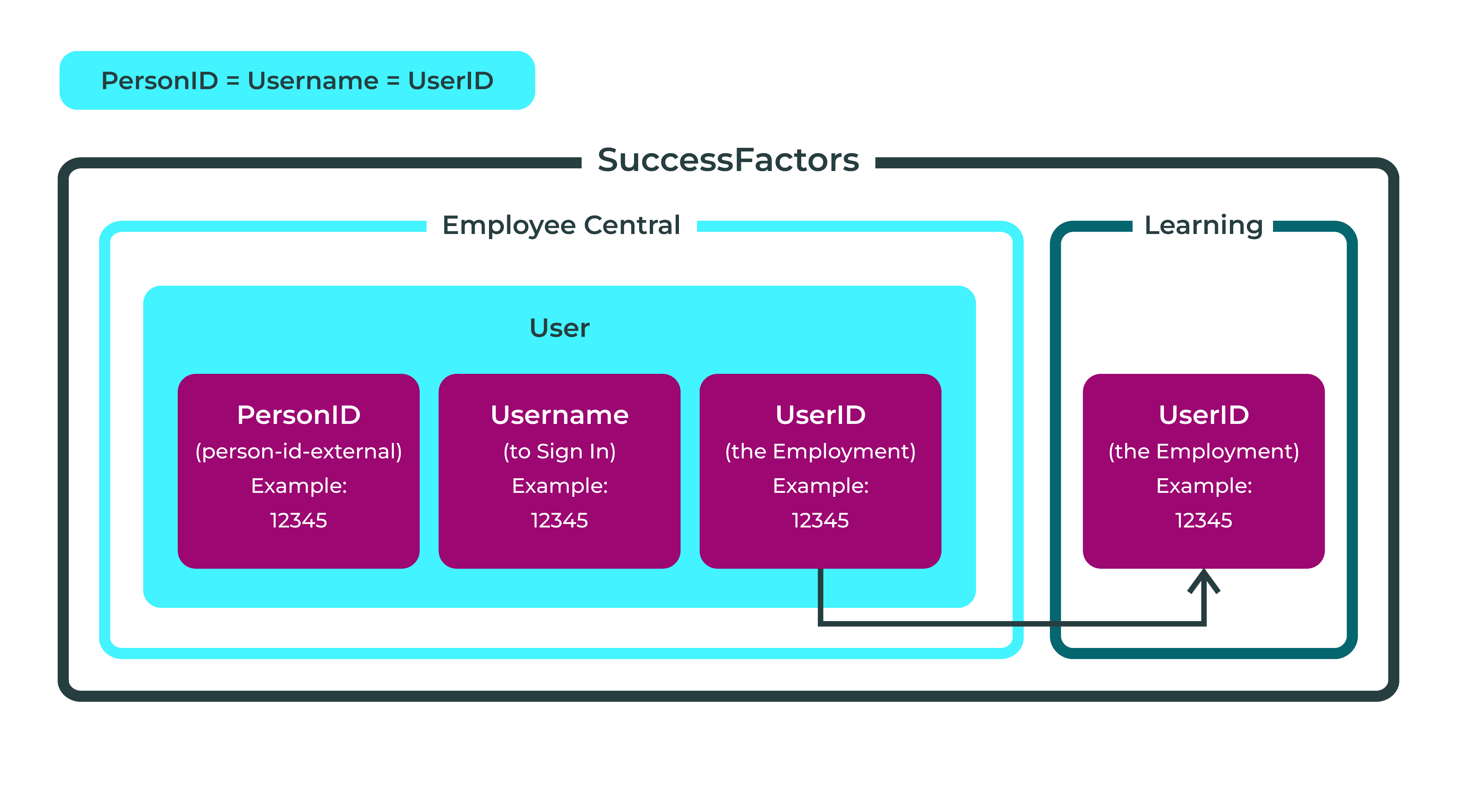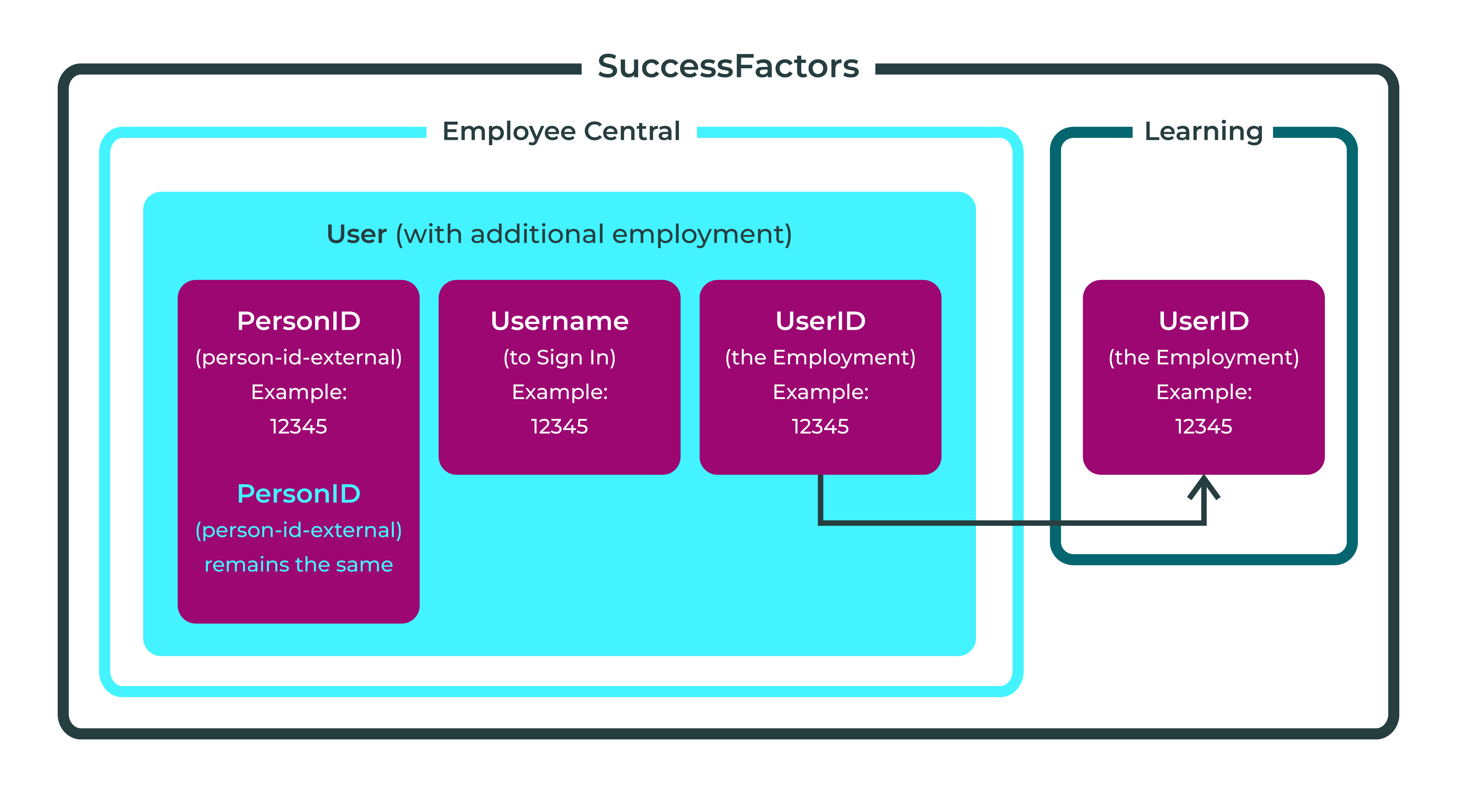Why Do User IDs Need to Be Merged in SuccessFactors Learning?
Overview
In SAP SuccessFactors Learning, it is common over time for multiple User IDs to be created for the same person. This occurs due to changes in employment status or assignments. To ensure learning data remains consolidated and accurate, these IDs can be merged. This document explains why this situation arises and how the merging process works.
Understanding User IDs in SuccessFactors
Person-id-external (labelled as Person ID on the UI)
This is the unique identifier assigned to the individual, regardless of employment status.
Think of this as the person’s identity – Marcus Smith as a human being.
Username
The login credential a person uses to access the system. This is manually assigned and may sometimes match the Person ID or User ID.
Think of this as the key to the account.
User ID
This represents the person’s employment record in the system and is linked to access in various modules, including Learning.
Think of this as the employment contract or role the person holds.
Scenario 1: A New Hire with a Single Employment

Scenario 2: Employment Changes and New User IDs
Global Assignment
Marcus takes a temporary assignment in another country (e.g., becomes Sales Director in Indonesia for the next three years).
Concurrent Employment
Marcus accepts an additional role while keeping his current position (e.g., also becomes Sales Representative for Brand Z).
Rehire on New Employment
Marcus resigns to work elsewhere, then returns to the company six months later.
In each of these cases, SAP SuccessFactors retains the same Person ID (the individual), but creates new User IDs and new Usernames to reflect the new employment instances:
- Person ID: Remains unchanged
- Username: A new one is created
- User ID: A new one is created

What Happens to Learning Data?
Concurrent or Global Assignments
When Marcus holds more than one job simultaneously, multiple active User IDs exist in the Learning module.
Each User ID has:
-
-
A separate learning plan
-
A separate learning history
-
This can lead to:
-
- Duplicate training assignments, especially for global or company-wide compliance courses
- Incomplete compliance reporting, if learning records are scattered across accounts
Rehire Scenario
When Marcus is re-hired, his new User ID does not automatically include past learning data.
This results in:
-
- An empty learning history, despite prior training
- The need to retake previously completed courses
The Solution: Merging User IDs
To address these issues, SAP SuccessFactors offers a merge process, which consolidates learning records from multiple User IDs into a single, unified account.
For Concurrent or Global Assignments:
-
- The learning data from secondary User IDs can be merged into the primary User ID
- The secondary accounts are retained in the system but inactivated and left dormant
For Rehires:
-
- The previous learning history can be merged into the new User ID
Automating the Process with TeamPeaks’ User Merge Tool
While SuccessFactors supports manual or batch merges, TeamPeaks has developed the User Merge Tool, an SAP BTP-based solution that automates this process.
How It Works:
-
- Automatically detects new User IDs in the Learning module when an employee receives a new position in Employee Central
- Initiates the merge of learning records into the primary User ID
- Consolidates all training data, producing detailed log files for traceability
Key Benefits:
-
- No manual intervention needed
- Prevents duplicate training assignments
- Preserves a complete and accurate learning history
- Provides an auditable log file for all merge operations
Curious to know more on the User Merge Tool?

